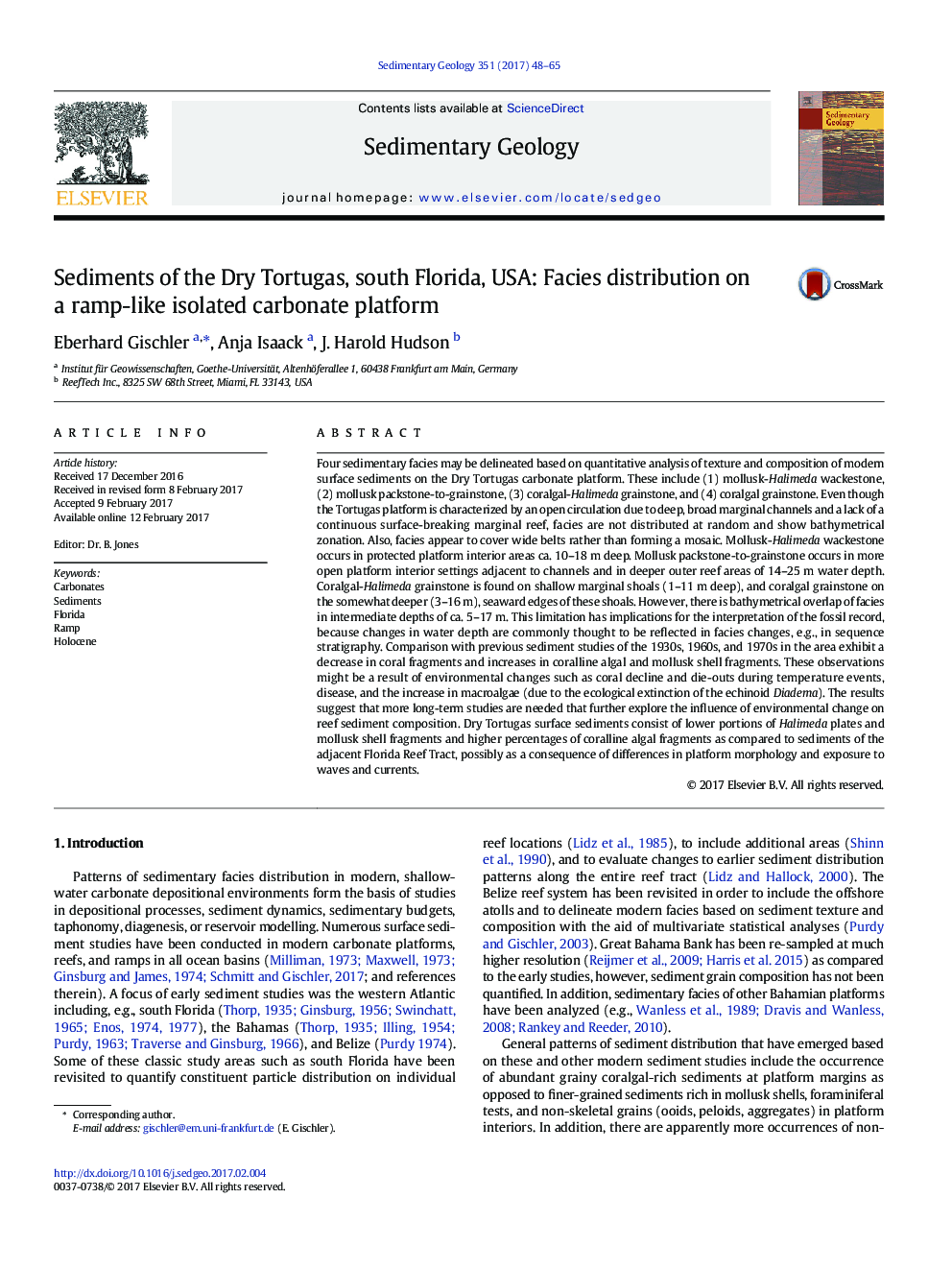| کد مقاله | کد نشریه | سال انتشار | مقاله انگلیسی | نسخه تمام متن |
|---|---|---|---|---|
| 5781408 | 1636012 | 2017 | 18 صفحه PDF | دانلود رایگان |

- Four facies delineated based on quantitative analysis of texture and composition of modern sediments on Dry Tortugas.
- Facies are not distributed at random and show bathymetrical zonation.
- Decrease in coral and increases in coralline algal and mollusk constituent particles as result of environmental changes.
- More long-term studies are needed that explore influence of environmental change on reef sediment composition.
Four sedimentary facies may be delineated based on quantitative analysis of texture and composition of modern surface sediments on the Dry Tortugas carbonate platform. These include (1) mollusk-Halimeda wackestone, (2) mollusk packstone-to-grainstone, (3) coralgal-Halimeda grainstone, and (4) coralgal grainstone. Even though the Tortugas platform is characterized by an open circulation due to deep, broad marginal channels and a lack of a continuous surface-breaking marginal reef, facies are not distributed at random and show bathymetrical zonation. Also, facies appear to cover wide belts rather than forming a mosaic. Mollusk-Halimeda wackestone occurs in protected platform interior areas ca. 10-18Â m deep. Mollusk packstone-to-grainstone occurs in more open platform interior settings adjacent to channels and in deeper outer reef areas of 14-25Â m water depth. Coralgal-Halimeda grainstone is found on shallow marginal shoals (1-11Â m deep), and coralgal grainstone on the somewhat deeper (3-16Â m), seaward edges of these shoals. However, there is bathymetrical overlap of facies in intermediate depths of ca. 5-17Â m. This limitation has implications for the interpretation of the fossil record, because changes in water depth are commonly thought to be reflected in facies changes, e.g., in sequence stratigraphy. Comparison with previous sediment studies of the 1930s, 1960s, and 1970s in the area exhibit a decrease in coral fragments and increases in coralline algal and mollusk shell fragments. These observations might be a result of environmental changes such as coral decline and die-outs during temperature events, disease, and the increase in macroalgae (due to the ecological extinction of the echinoid Diadema). The results suggest that more long-term studies are needed that further explore the influence of environmental change on reef sediment composition. Dry Tortugas surface sediments consist of lower portions of Halimeda plates and mollusk shell fragments and higher percentages of coralline algal fragments as compared to sediments of the adjacent Florida Reef Tract, possibly as a consequence of differences in platform morphology and exposure to waves and currents.
Journal: Sedimentary Geology - Volume 351, 15 April 2017, Pages 48-65